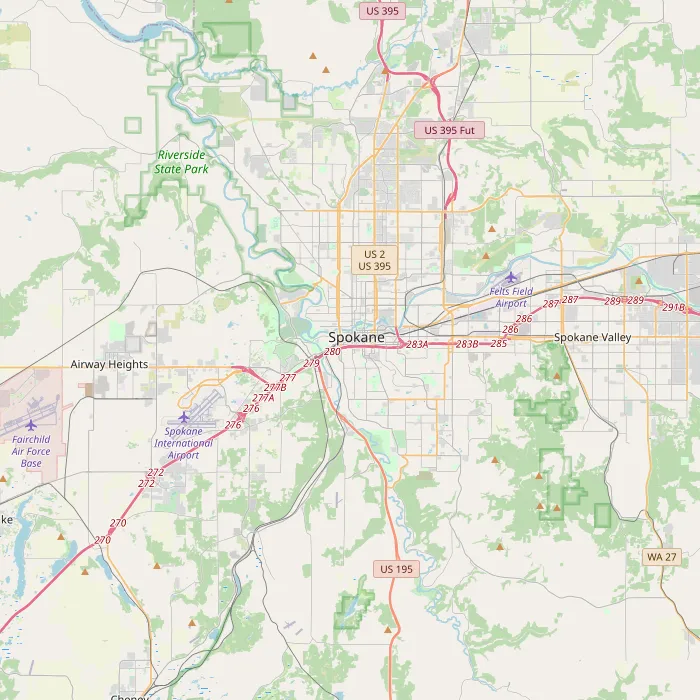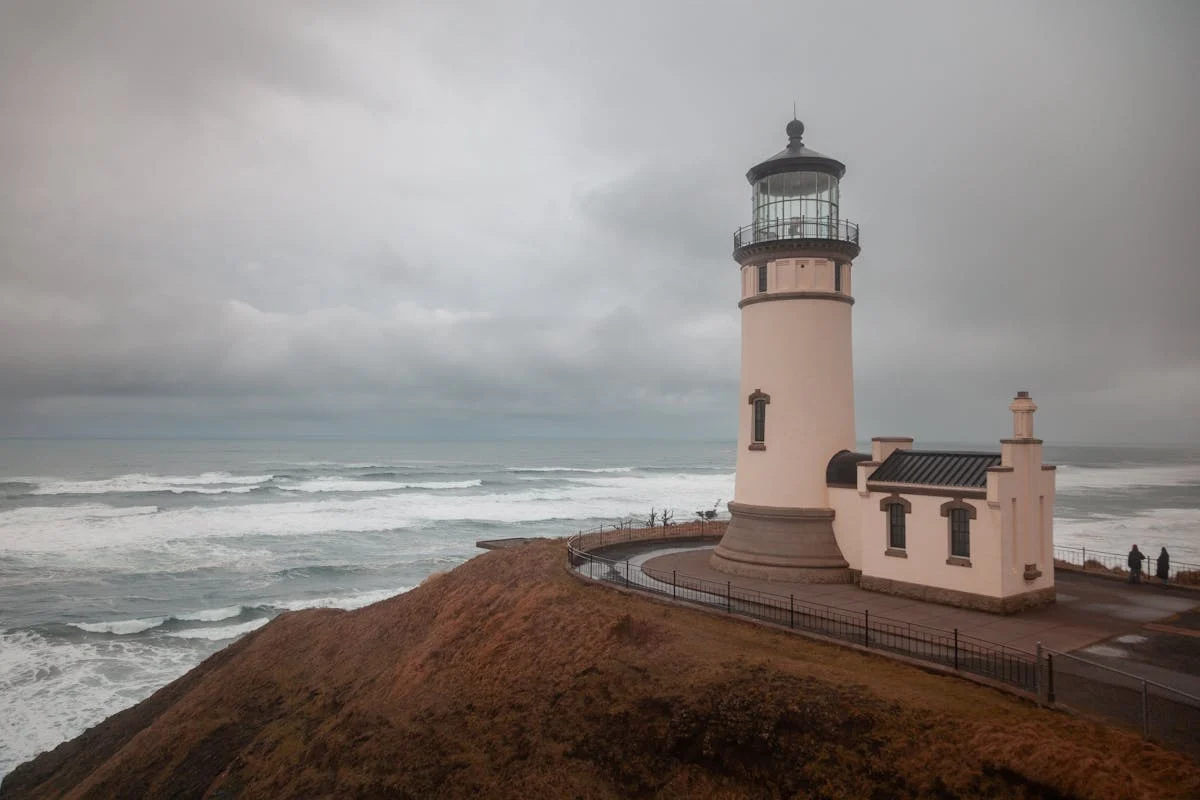Understanding the climate in Spokane, Washington, is essential for planning your perfect visit to this vibrant Inland Northwest city. Spokane experiences four distinct seasons, each offering unique beauty and opportunities for exploration, from outdoor adventures to cultural experiences. Whether you’re dreaming of sunny summer days by the river or a snowy winter getaway, knowing what weather to expect will help you make the most of your trip.
Spokane’s climate is characterized by warm, dry summers and cold, sometimes snowy winters, with pleasant transitional seasons in spring and fall. This variation makes it a year-round destination, provided you pack appropriately for the time of year. The geographical setting, nestled near the foothills of the Rocky Mountains and along the Spokane River, influences local weather patterns, creating microclimates in and around the city.
Knowing the typical climate in Spokane Washington allows travelers to anticipate conditions for activities like hiking in nearby state parks, exploring the revitalized Riverfront Park, enjoying local vineyards, or hitting the slopes at one of the region’s ski resorts. Each season brings its own set of recommended activities and necessary preparations.
Getting a sense of how much these sources agree with each other, you can view a comparison of Spokane and the stations that contribute to our estimates of its temperature history and climate. Please note that each source’s contribution is adjusted for elevation and the relative change present in the MERRA-2 data.
 Map showing weather data source locations near Spokane Washington
Map showing weather data source locations near Spokane Washington
Understanding the Climate In Spokane Washington Season by Season
Let’s break down what you can generally expect from the climate in Spokane Washington throughout the year, season by season, from a traveler’s perspective. This guide will help you choose the best time to visit based on your preferred activities and comfort level with different weather conditions.
The transition between seasons is often quite beautiful. Spring brings blooming flowers and warming temperatures, while fall offers stunning foliage colors. Summer is the peak tourist season for outdoor enthusiasts, and winter appeals to those who enjoy snow sports or cozy indoor activities.

Considering the typical climate in Spokane Washington is crucial not just for packing, but also for booking accommodations and tours, as peak season demand fluctuates with the weather. Events and festivals are often scheduled to align with the most favorable weather patterns for outdoor gatherings.
Spring in Spokane: Awakening City
Spring in Spokane, typically from March to May, sees temperatures gradually rise from cool to mild. March can still have some chilly days and even late snowfall, but by April and May, the weather becomes much more predictable and pleasant. Average high temperatures range from the 40s (°F) in early spring to the high 60s (°F) by late May. Lows can still dip below freezing in March but are generally above 40°F by May.
Precipitation is moderate in spring, often arriving as rain showers. The city and surrounding areas come alive with greenery and blooming flowers, making it an ideal time for scenic walks and exploring gardens like the John A. Finch Arboretum. The Spokane River flows strongly from mountain snowmelt, creating impressive views at Spokane Falls.
Fun Things to Do in Kissimmee Florida
Where To Go In Waikiki – Your Ultimate Guide to Hawaii’s Iconic Beachfront
The Best Things to Do in Naples – Your Ultimate Italian Experience
Activities suited for the spring climate in Spokane Washington include hiking the trails before the summer heat, visiting local farmers’ markets as they begin to open, and attending spring festivals. Layered clothing is highly recommended, as temperatures can change throughout the day.
Summer in Spokane: Sun-Drenched Adventures
Summer, from June to August, is arguably the most popular time to visit Spokane, thanks to its warm, dry, and sunny climate. This is when the climate in Spokane Washington is at its most inviting for outdoor activities. Average high temperatures typically range from the mid-70s (°F) to the high 80s (°F), often exceeding 90°F for periods in July and August. Evenings cool down nicely, with lows usually in the 50s (°F).

Precipitation is minimal during summer, with long days of sunshine being the norm. This weather is perfect for enjoying Riverfront Park, which offers gondola rides over the falls, playgrounds, and open spaces. Water activities on nearby lakes like Coeur d’Alene or Spokane River itself become popular.
Summer is festival season in Spokane, with events like Hoopfest, the world’s largest 3-on-3 basketball tournament, drawing huge crowds. Packing light clothing, sunscreen, hats, and staying hydrated are key during these warm months.
Fall in Spokane: Crisp Air and Colorful Scenery
Fall, from September to November, brings a refreshing change to the climate in Spokane Washington. Temperatures begin to cool down, and the landscape transforms into a palette of vibrant reds, oranges, and yellows. September remains relatively warm with average highs in the 70s (°F), but October and November see a significant drop, with highs falling into the 50s and 40s (°F) respectively.
Fall is also when precipitation increases, though it’s often in the form of rain rather than snow, especially in September and October. By November, the first significant snowfall can occur. The crisp air is perfect for exploring the city’s parks and surrounding nature trails to witness the fall foliage.
Harvest season brings opportunities to visit local apple orchards and pumpkin patches. Activities like attending Gonzaga basketball games (pre-season starts in the fall) or exploring the Davenport Arts District are great ways to enjoy the season. Layering is essential, and having a waterproof jacket is advisable.
Winter in Spokane: A Snowy Wonderland
Winter in Spokane, from December to February, is cold and typically sees snowfall, transforming the city into a winter wonderland. The climate in Spokane Washington during these months is characterized by average high temperatures often hovering around or below freezing (32°F), while lows frequently drop into the 20s or even teens (°F).
Snowfall varies year to year but is common enough for winter sports enthusiasts to rejoice. The average annual snowfall is around 44 inches, much of which falls during these months. The presence of snow cover makes for beautiful scenery and enables activities like skiing, snowboarding, and snowshoeing at nearby resorts such as Mount Spokane or Schweitzer Mountain (across the border in Idaho).
Indoor activities like visiting museums (e.g., MAC – Northwest Museum of Arts and Culture), enjoying the vibrant local food and craft beer scene, or catching a show at the Fox Theater are popular ways to stay warm. Proper winter attire, including warm coats, hats, gloves, and waterproof boots, is a must for visiting Spokane in winter.
Best Time to Visit Spokane Based on Climate
Choosing the best time to experience the climate in Spokane Washington depends entirely on your travel preferences:
- For Warm Weather & Outdoor Activities: June to August is ideal. Expect sunshine, warmth, and minimal rain.
- For Fall Colors & Crisp Air: September and October offer beautiful scenery and comfortable temperatures for exploring.
- For Winter Sports & Snowy Landscapes: December to February provides the best chance of snow and access to ski resorts.
- For Fewer Crowds & Mild Weather: April, May, and early June offer pleasant temperatures and blooming landscapes before the peak summer rush.
Understanding the seasonal variations in the climate in Spokane Washington allows for tailored planning, ensuring you have the gear and expectations needed for a fantastic trip, regardless of when you choose to visit.
Frequently Asked Questions About the Climate In Spokane Washington
Navigating the climate in Spokane Washington can bring up several questions for first-time visitors. Here are some frequently asked questions to help clarify what to expect.
Understanding these common climate patterns helps travelers prepare adequately for their trip to Spokane, making their experience more comfortable and enjoyable, whether they’re visiting for business or leisure.
Does it snow a lot in Spokane?
Spokane receives a moderate amount of snow, averaging about 44 inches annually. Significant snowfall typically occurs from December through February, creating conditions suitable for winter sports in the region.
Is Spokane humid?
Spokane has a semi-arid climate with relatively low humidity, especially during the dry summer months. Even in winter, the air tends to be less humid than in many coastal areas.
What is the hottest month in Spokane?
July and August are typically the hottest months in Spokane, with average high temperatures frequently in the high 80s (°F) and occasional heat waves pushing temperatures into the 90s or even 100s (°F).
What is the coldest month in Spokane?
December and January are usually the coldest months, with average high temperatures often below freezing and overnight lows well into the 20s (°F).
What is the rainy season in Spokane?
Spokane’s wettest period is typically from November through January, though precipitation is spread throughout the fall and winter months. Summers are very dry.
Conclusion: Embrace the Seasons in Spokane
The climate in Spokane, Washington, offers a diverse experience throughout the year, ensuring there’s a perfect time to visit for almost any interest. From the warm, activity-filled summers to the picturesque, snowy winters, Spokane’s seasons provide a distinct backdrop for exploring its blend of urban culture and natural beauty.
Whether you’re drawn by the promise of sun-drenched hiking trails, the vibrant colors of fall foliage, the allure of fresh powder on the ski slopes, or the gentle awakening of spring, understanding the climate in Spokane Washington is your first step towards planning an unforgettable journey. Pack according to the season, embrace the local conditions, and discover the unique charm that each time of year brings to this welcoming city.
